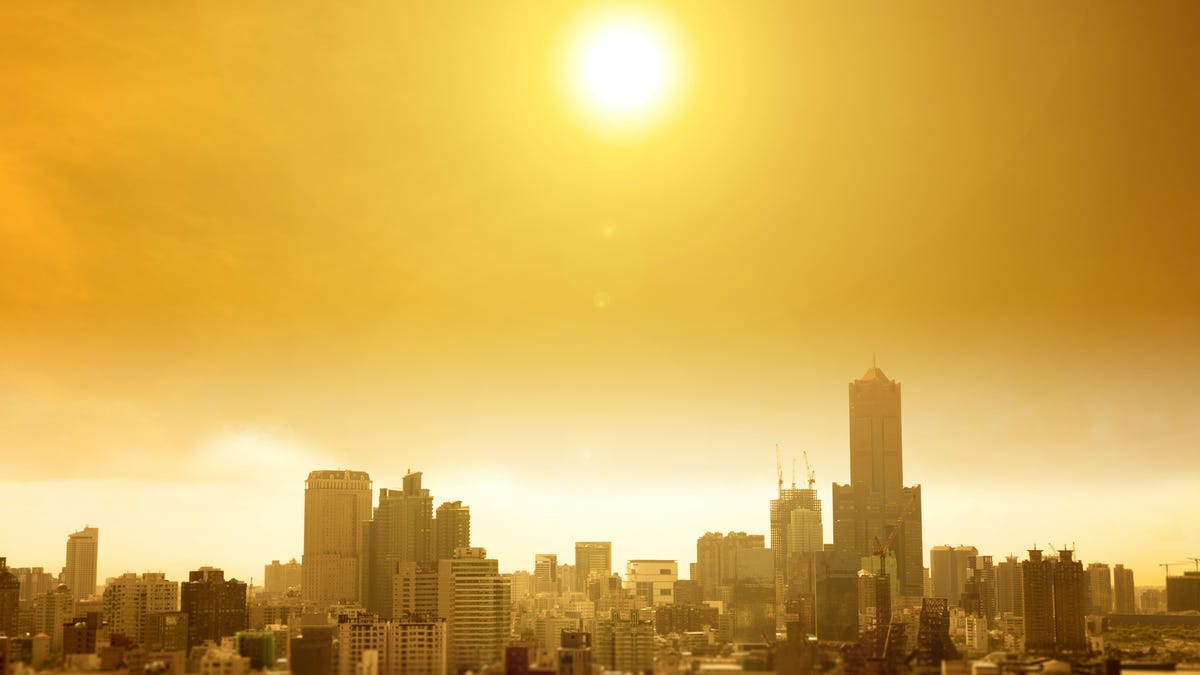What people in the world’s hottest countries do to stay cool


As global warming changes the climate, places that were once temperate become hotter. Scientists believe the average temperature in the United States isS. The city will be about 3°debt Higher than today in 2050Bozeman, Mont, etc. are twice as bad in some places.; St. Paul, Minnesota. Average temperatures in Chicago will increase by nearly 6°F. So we all The world is hotter than ever.
Many people may say, “Let’s turn on the air conditioner,” but that’s how I came to this point. Instead, let’sConsider the lessons learned by people elsewhere who have coped with excessive heat without air conditioning for thousands of years.
White Roof (Indonesia): The color of the roof is gigantic temperature difference within the building. Researchers have found that in tropical Indonesia, roofs are painted with a special white paint called MS-Thermashield. Cool the building by 10°Ha—It’s 50 degrees Fahrenheit!—the hottest time of the day. It might not give you as dramatic results, but if you want to stay cool, it’s a good idea to paint your roof with heat-reflective paint.
Solar panels that create shade (Israel): First test of eco-friendly shading system in Tel Aviv It is in progress. Lumiweave Designed to keep people cool during the day Public awning structures are covered with solar panels and act as streetlights after dark. Lessons Learned: EEven if you don’t have natural shade, shades, parasols, pergolas, or other shades can help keep your area cool.
White loose-fitting clothing (Saudi Arabia, and most other hot places): Wear light–Loose clothing in colored natural fibers is a movement in the Middle East, India, and other hot places.
G/O Media can earn commissions
70% off
Jachs NY Summer Shorts Sale
SUMMER STYLE EXCLUSIVE SALE
Available in patterns, solid colors, twill, chinos, and 7-9 inch inseam, these classic shorts tell stories.
Conical hat (Asia): Traditional sedge hats, or conical hats, are worn throughout Asia and are perfectly designed to beat the heat. Large enough to protect the wearer. You can even submerge it in water to make it a personal evaporative cooler. Walking around wearing a conical hat may not be culturally sensitive, but the same principle applies to a conical hat. big straw hat southern worn by surfers in californiaand that floppy gardening hat rocked your aunt, that too.
Cool your neck (India): In India, Pakistan, Bangladesh, and parts of South and Southeast Asia, many people wear versatile cotton towels that can be used as scarves, head coverings, or face masks. can be used as a weapon in a pinch. in the heat Often soaked in water and draped Drape it around your neck and shoulders for personal cooling.check these out cooling towel For more advanced applications of the same principle.
Conventional sunscreen (Myanmar): Myanmar people Tanaka, a yellowish paste or cream made from the ground bark of local trees, over 2,000 years old. It looks good, smells like sandalwood, feels refreshing and protects the skin from the sun. Thanaka is often applied thickly on cheeks and nose, where sunscreen is applied. lesson: many of sunscreen.
Taking a siesta (Spain): Although the name is often associated with Spain, taking a nap or rest during the hottest part of the day is traditionally practiced everywhere from China to Italy to the Middle East.it just makes Be conscious of not overdoing it when it’s hot, and normalize naps in the US quickly.S.The sooner we all take a nap after lunch, the better.
Fan (Egypt): The earliest evidence for folding fans dates back to around 2000 BC in Egypt, but they may have been around since the hot climate period. The mechanical fan is made in China.In 180 AD, the Han Dynasty inventor Ting Huang alone Cools the entire building. How to cool your home with a fan It’s a hotly debated topic, but it’s generally best used to bring in cool air at night and expel warm air during the day.
Cooling curtain (India): In India, it was once common to hang curtains woven from yarn. Kusu Or vetiver, local grasses, outdoor doors and windows. During the hottest hours of the day, the curtains were sprayed with water to cool and dampen the dry air outside as it passed through the house. The rise of air conditioning made this practice less common, but it’s making a comeback as people look for greener ways to cool down. You can find similar curtains at home supply stores, or use a different approach and hang heavier curtains designed to keep a room dark and cool.
“Passive” buildings (Germany): Traditional architectural styles in tropical regions feature many ways to keep buildings cool.passive houseGerman design learns from many of them and adds modern materials and know-how. Passive buildings are designed to be energy-Insulation, building materials, and other passive heating and cooling technologies, rather than air conditioning, maintain efficient and stable temperatures.
Check-in program (Brazil and Australia): both Brazil and Australia recently launched public programs Officials call or text vulnerable members of society during heat emergencies to make sure they’re okay. , does not take your breath away. So do your own research on who is susceptible to heat waves.
get used to (universal): Using every method to beat the available heat, yet It gets hot in the heat wave. But you will get used to it. People can adapt to extreme situations. Besides, you don’t get to choose.
What people in the world’s hottest countries do to stay cool
Source link What people in the world’s hottest countries do to stay cool



